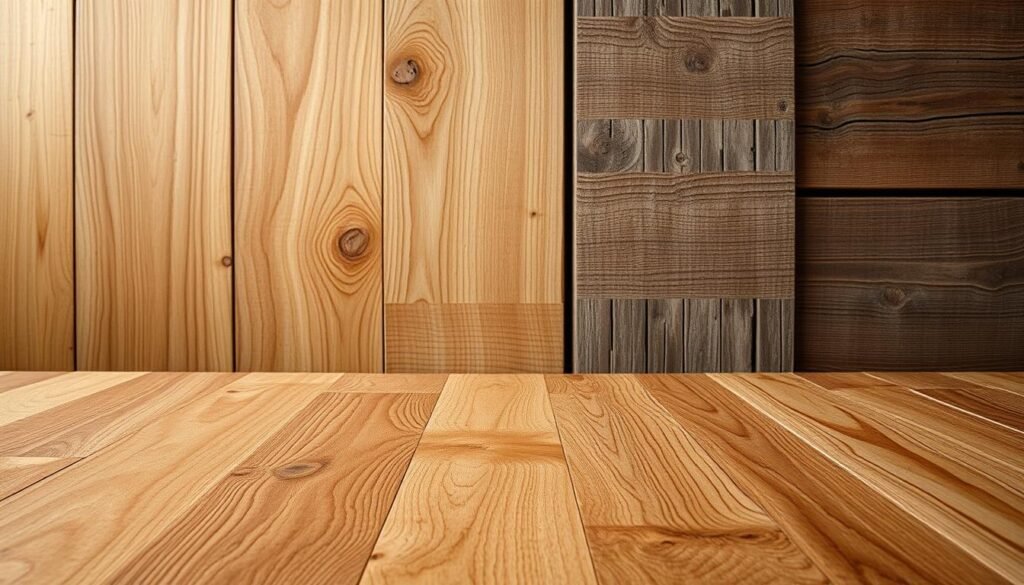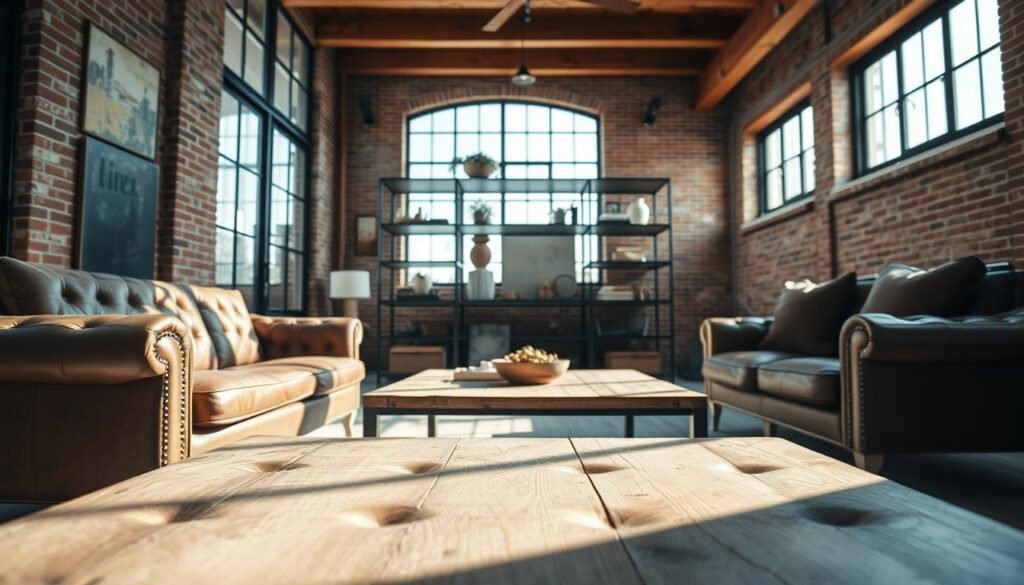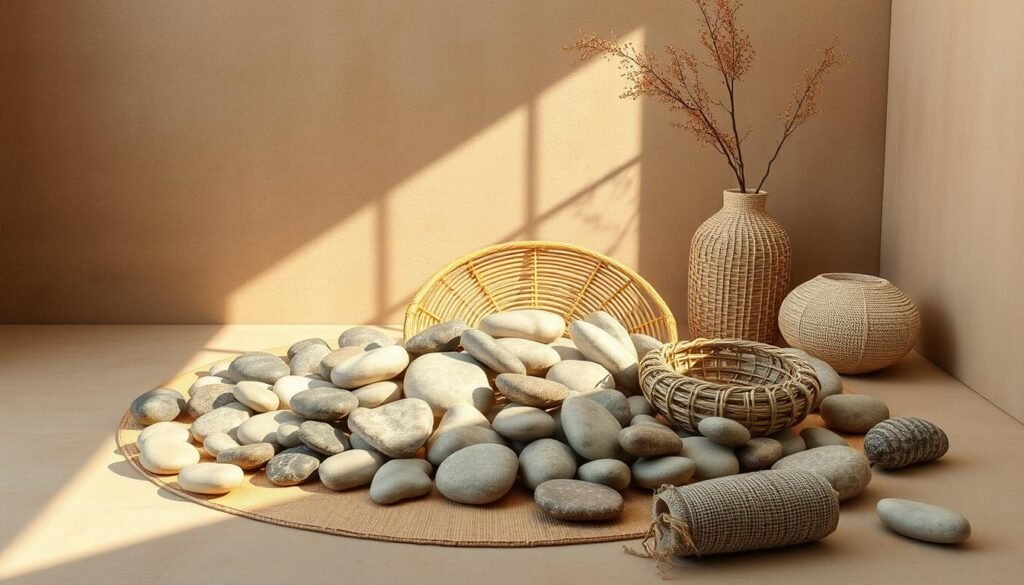This post may contain affiliate links. When you purchase through links on our site, we may earn an affiliate commission.
Have you ever walked into a room and felt instantly grounded, as if every object whispered tales of heritage while still feeling fresh? That’s the magic of blending timeless charm with today’s comforts—a balance I’ve spent years perfecting. When I first explored this approach, I realized it’s not just about aesthetics. It’s about creating spaces that breathe with history yet pulse with life.
My journey began with a simple question: How do we honor raw, natural textures without sacrificing sleek functionality? The answer lies in thoughtful contrasts. Imagine reclaimed wood beams framing minimalist lighting, or weathered ceramics beside smooth concrete countertops. These pairings don’t clash—they sing.
What surprised me most was how this philosophy transformed not just rooms, but how I interact with my environment. It’s more than a trend—it’s a dialogue between eras. By weaving industrial metals with organic fibers or mid-century silhouettes with handcrafted details, we create homes that feel authentically alive.
Key Takeaways
- Balance raw textures with clean lines for warmth and sophistication
- Use natural materials like wood and stone to anchor your space
- Mix vintage finds with contemporary furniture for visual tension
- Let lighting bridge eras—think iron chandeliers with LED bulbs
- Embrace imperfections as character-building elements
Discovering My Modern Rustic Interior Journey
One rain-soaked afternoon, I stumbled upon Thoreau’s words—“Live in each season as it passes”—and found the blueprint for my style awakening. My ultra-sleek apartment suddenly felt sterile, like a glass box floating above the earth. I craved rooms that hugged the ground, where every surface told stories of forests and craftsmanship.
https://www.youtube.com/watch?v=4KaSELttUak
My Personal Inspirations
Digging into history revealed surprising connections. The 19th-century Transcendentalists didn’t just write essays—they sparked a furniture revolution. Adirondack craftsmen began shaping twig-legged tables and bark-covered chairs, answering urbanites’ hunger for nature. This table shows how their ideas translate today:
| Traditional Rustic Element | Modern Counterpart | Design Impact |
|---|---|---|
| Hand-hewn logs | Steel-framed seating | Adds weight without bulk |
| Woven willow baskets | Geometric concrete planters | Mixes softness with edge |
| Oil lanterns | Industrial pendant lights | Maintains warmth in clean lines |
Balancing Modern Flair with Rustic Warmth
I learned harmony lives in contrasts. A polished concrete floor becomes welcoming under a shaggy jute rug. Sleek cabinets feel approachable when paired with live-edge shelves. The magic happens when efficiency meets imperfection—like WiFi-enabled thermostats nestled beside stone fireplaces.
Through countless experiments, I discovered this approach isn’t about nostalgia. It’s creating spaces where technology serves quietly, letting raw wood grains and linen textures take center stage. My home now breathes like a forest clearing—alive, grounded, yet effortlessly functional.
Essential Elements of Modern Rustic Interior Design
The first time I held a piece of reclaimed teak, its weathered surface told more stories than any decor magazine ever could. This moment crystallized what makes this aesthetic sing—materials that carry history while serving contemporary needs. Let me walk you through the core components that create spaces both timeless and fresh.

Key Features and Materials
At its heart, this style celebrates nature’s raw beauty. Reclaimed wood beams with visible saw marks become focal points, while honed stone surfaces add grounding energy. I often pair these organic textures with clean-lined metal accents to prevent spaces from feeling too heavy.
Through trial and error, I’ve developed this cheat sheet for balancing elements:
| Material Type | Characteristics | Best Use |
|---|---|---|
| Reclaimed Wood | Knots, grain variations, weathered patina | Statement walls, floating shelves |
| Raw Iron | Matte finish, slight oxidation | Light fixtures, cabinet hardware |
| Natural Stone | Uneven edges, mineral deposits | Countertops, fireplace surrounds |
| Distressed Leather | Subtle scratches, soft sheen | Accent chairs, throw pillows |
What surprises newcomers? How well these materials age. That teak table develops richer tones with use. Stone surfaces gain character from citrus stains and olive oil splatters. It’s about embracing life’s marks as part of your home’s story.
My golden rule: let three textures converse in every zone. A linen sofa cushion against a chunky wool throw, resting on a sisal rug. This layering creates depth without clutter. Remember, the goal isn’t perfection—it’s authenticity you can live in.
Key Principles for Blending Modern and Rustic Aesthetics
I once salvaged a 1920s farmhouse door with peeling paint and bullet hinges. When paired with frosted glass panels, it became the centerpiece of a sunlit breakfast nook—proof that contrasting eras can create magic. This discovery shaped my core philosophy: spaces sing when they honor both heritage and evolution.

Embracing Nature and History
True harmony emerges when materials whisper stories. I follow three rules: let patina shine, balance proportions carefully, and allow one era to respond to another. A Civil War-era barn beam becomes sculptural when floating above a concrete island. Woven rattan chairs gain edge beside metallic side tables.
“Nature never designs in straight lines—why should our homes?”
This table reveals how I bridge time periods:
| Historical Element | Contemporary Pairing | Visual Effect |
|---|---|---|
| Hand-forged iron hooks | Glossy subway tile | Softens sleek surfaces |
| Weathered ship lap | Acrylic bar stools | Adds airiness |
| Antique milk paint | Smart home tech | Grounds modernity |
The trick? Treat each piece like conversation partners. That industrial pendant light should ask questions of the farmhouse table below it. I’ve found the sweet spot lies in 60/40 ratios—60% organic textures to 40% streamlined forms.
Through client projects, I’ve learned restraint separates cluttered from curated. One Navajo rug deserves spotlighting, not five. Let that reclaimed wood mantel breathe against smooth plaster. When done right, you feel the pull of history without sacrificing tomorrow’s comforts.
Curating a Neutral Color Palette and Natural Materials
A pottery class taught me that clay’s natural hues inspire more harmony than any Pantone deck. This revelation transformed how I approach neutral color palettes—now I let raw elements dictate the conversation. Earthy tones whisper through unfinished surfaces, creating spaces that feel both intentional and effortless.

Choosing the Perfect Colors
My process begins with materials themselves. Reclaimed wood’s amber undertones might suggest a base of warm caramel. A slate slab’s blue-gray veins could inspire accent colors. I stick to three core shades—usually:
- Stone gray as a calming anchor
- Olive green for organic depth
- Creamy beige to warm cool undertones
This tri-chromatic approach prevents visual chaos. Last month, I layered sepia-toned linen curtains over white oak floors, then added charcoal throw pillows. The result? A living room that breathes like coastal dunes at dawn.
Selecting Materials for a Cohesive Look
Texture tells half the story. I pair matte limestone with glossy forged iron handles—their finishes create quiet contrast. Over time, natural materials evolve beautifully. Unsealed cedar develops silvery streaks, while leather acquires a honeyed glow.
“Good design lets materials speak in their native tongue.”
My secret weapon? Testing samples under different lights. A travertine tile might blush pink at sunset but stay cool gray at noon. These nuances ensure your color palette works round-the-clock, proving nature’s artistry needs no filter.
Incorporating Reclaimed Wood and Timeless Textures
The scent of aged timber—earthy and slightly sweet—still lingers on my hands after transforming salvaged barn boards into a dining table. This tactile connection fuels my belief that reclaimed wood anchors spaces with unmatched depth. Each plank’s cracks and patina become living proof of time’s artistry, blending seamlessly with today’s clean-lined furniture.
Finding Unique Pieces with Character
Scouting materials feels like treasure hunting. I once turned warped factory floorboards into floating shelves that showcase a homeowner’s pottery collection. The key? Seeking pieces where imperfections are the design—knots that resemble mountain ranges, nail holes that map constellations.
Techniques like wire brushing reveal hidden textures, while hand-scraping preserves organic movement. My workshop table below shows how treatments enhance personality:
| Treatment | Effect | Best For |
|---|---|---|
| Wire Brushing | Exposes deep grain | Flooring, wall panels |
| Hand-Scraping | Creates subtle ridges | Tabletops, doors |
| Natural Aging | Develops silvery patina | Exterior accents |
Repurposed objects spark the most joy. An old water pail becomes a planter, its dents recalling decades of use. These stories transform houses into homes—proof that character isn’t manufactured, but earned through life’s beautiful wear.
Smart Furniture Choices and Layout Ideas
Selecting furniture isn’t just about filling a room—it’s about crafting experiences. My approach starts with natural anchors like live-edge dining tables or desks showcasing wood’s organic patterns. These pieces ground the space, letting their knots and grains become living art.
Mixing Vintage Charm with Contemporary Comfort
I pair rugged materials with sleek silhouettes for daily ease. A Nottingham dining table might host smooth acrylic chairs, their curved backs cradling spines during long meals. The secret? Letting each piece complement without competing—like linen cushions softening a wrought-iron bench.
Creating a Functional, Yet Inviting Space
Flow matters as much as form. I map foot traffic before placing furniture, ensuring pathways feel natural. Storage hides in plain sight through hollow ottomans or floating shelves. Every choice serves dual purposes: a hand-carved coffee table becomes a work surface, while woven baskets corral remotes stylishly.
Artisan-made furniture elevates rooms from staged to lived-in. I recently sourced a maple desk where tool marks dance across its surface—proof that imperfections make spaces breathe. Avoid matchy sets; instead, curate items that whisper, “Come stay awhile.”
Innovative Lighting and Accent Details
Light became my secret weapon when I realized its power to transform cold corners into soulful spaces. The right illumination doesn’t just brighten—it tells stories through shadows and highlights, turning functional areas into emotional experiences.
Setting the Mood with Creative Fixtures
I discovered that a wrought-iron chandelier above a dining table does more than light meals. Its crisscross patterns cast dancing shadows on raw wood surfaces, adding visual interest that changes with the hour. For clients craving warmth, I use Edison bulbs in blackened steel sconces—their amber glow makes any room feel like a fireside chat.
Sheer linen curtains became my go-to for softening harsh sunlight. They let natural rays spotlight stone textures while keeping privacy intact. At night, adjustable brass lamps take over, their arms bending to illuminate books or highlight pottery collections.
My favorite trick? Layering three light types in one space. A cluster of pendant lights over the kitchen island pairs with under-cabinet LEDs and recessed ceiling spots. This mix lets you shift from morning coffee prep to midnight snack runs without losing that lived-in touch.
Every home deserves lighting that adapts like seasons—bright and energizing by day, intimate and restorative after dark. When fixtures harmonize with natural materials, they don’t just fill space. They make it breathe.





 using WordPress and
using WordPress and 
No responses yet